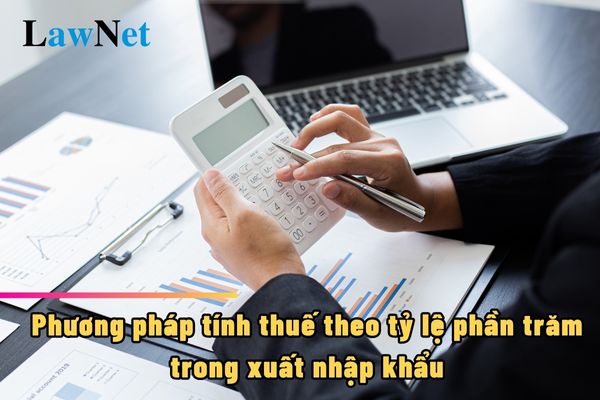How to calculate proportional tax in export and import of goods in Vietnam?
How to calculate proportional tax in export and import of goods in Vietnam?
According to Clause 3, Article 4 of the 2016 Law on Export and Import Taxes, it is stipulated as follows:
Definitions
In this Law, the following terms are understood as follows:
1. The non-tariff zone is an economic area within the territory of Vietnam, established in accordance with the law, with specific geographical boundaries, separated from the outside by a solid fence, ensuring conditions for customs inspection, supervision, control activities by the customs authorities and other relevant agencies for exported and imported goods and means of transportation, passengers entering and exiting; trade relations between the non-tariff zone and the outside are export and import relations.
2. The combined tax calculation method is applying both the percentage rate method and the absolute tax calculation method simultaneously.
3. The proportional tax is determining the tax as a percentage (%) of the taxable value of exported or imported goods.
...
Thus, according to the regulations, the proportional tax in the export and import of goods is the determination of the tax as a percentage (%) of the taxable value of the exported or imported goods.

How to calculate proportional tax in export and import of goods in Vietnam? (Image from the Internet)
What are the bases for calculating proportional tax in export and import of goods in Vietnam?
According to Article 5 of the 2016 Law on Export and Import Taxes, the basis for calculating export and import taxes for goods applying the proportional tax is as follows:
- The amount of export and import tax is determined based on the taxable value and the tax rate as a percentage (%) of each item at the time of tax calculation.
- The tax rate for exported goods is specifically stipulated for each item in the export tariff.
In cases where goods are exported to countries, groups of countries, or territories with preferential agreements on export taxes in trade relations with Vietnam, these agreements shall apply.
- The tax rate for imported goods includes preferential tax rates, special preferential tax rates, and ordinary tax rates and is applied as follows:
+ Preferential tax rates apply to imported goods originating from countries, groups of countries, or territories that accord most-favoured-nation treatment in trade relations with Vietnam;
Goods from the non-tariff zone imported into the domestic market meeting the origin conditions from countries, groups of countries, or territories that accord most-favoured-nation treatment in trade relations with Vietnam;
+ Special preferential tax rates apply to imported goods originating from countries, groups of countries, or territories having special preferential agreements on import taxes in trade relations with Vietnam;
Goods from the non-tariff zone imported into the domestic market meeting the origin conditions from countries, groups of countries, or territories having special preferential agreements on import taxes in trade relations with Vietnam;
+ Ordinary tax rates apply to imported goods not falling under the cases stipulated in points a and b of this clause. The ordinary tax rate is stipulated as 150% of the preferential tax rate of each corresponding item.
In cases where the preferential tax rate is 0%, the Prime Minister of Vietnam shall decide on the application of the ordinary tax rate according to the provisions of Article 10 of the 2016 Law on Export and Import Taxes.
What is the deadline for paying export and import taxes in Vietnam?
According to Article 9 of the 2016 Law on Export and Import Taxes, the deadline for paying export and import taxes is regulated as follows:
- Exported or imported goods subject to tax must pay tax before customs clearance or release of goods according to the provisions of the Customs Law, except for cases stipulated in Clause 2, Article 9 of the 2016 Law on Export and Import Taxes.
In cases where the tax to be paid is guaranteed by a credit institution, goods can be cleared or released, but late payment interest must be paid according to the provisions of the Tax Administration Law from the date of customs clearance or release of goods until the tax is paid.
The maximum guarantee period is 30 days from the date of customs declaration registration.
In cases where the tax is guaranteed by a credit institution but the guarantee period has expired and the taxpayer has not paid the tax and late payment interest, the guaranteeing institution shall have the responsibility to pay the full tax and late payment interest on behalf of the taxpayer.
- Taxpayers applying the priority policies according to the provisions of the Customs Law are allowed to pay tax for customs declarations that have been cleared or released within the month, no later than the tenth of the following month.
If this deadline is missed and the taxpayer has not paid the taxes, they must pay the full tax debt and late payment interest according to the provisions of the 2019 Tax Administration Law.

